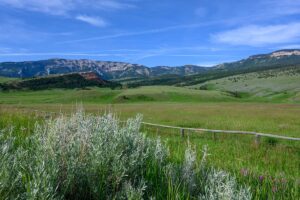When selling farmland or a ranch that has both a primary residence and land, it is important to consider the tax consequences of Internal Revenue Code Section 121 and Section 1031. Vacant land can be sold along with a primary residence, utilizing the $250,000 ($500,000 married filing jointly) exclusion given the property was owned and used by the taxpayer as the taxpayer’s primary residence for time totaling two years or more. The capital gain exclusion is available once every two years.
Recreational vs. Investment Surrounding Land
Given the primary home is surrounded by substantial adjacent land held for investment and not for residential purposes, a 1031 exchange should be considered to defer the gain on the land. Consequently, the home can be excluded from gain under Section 121 and investment or land held in the productive use of a farm or ranch excluded from gain under Section 1031.
Separate Dwelling Unit
Revenue Procedure 2005-14 addresses mixed use property where a primary residence exists as a separate or same dwelling unit with non-residence property such as a farmhouse, apartment unit, hotel, motel, inn or bed and breakfast. To determine the amount of gain accounted for from the primary home and non-residential buildings or building portions, the taxpayer may allocate basis and realized gain by square footage. The Section 121 exclusion is applied first to the primary residence, and Section 1031 applied to the investment or non-residence portion.
The outcome of a farm or ranch closing are separate settlement statements reflecting the primary residence separate from the investment or real property, and inclusive of the personal property if irrigation, livestock or equipment are also included in the sale. Affixed irrigation equipment, including center pivots, pumps, filters and supply pipes are considered real property improvements, while portable water wheels not affixed to the ground are considered personal property. The 1031 exchange agreements should not reflect the primary residence. The taxpayer may receive cash from the sale of their primary residence while the investment proceeds are wired to the qualified intermediary for the 1031 exchange.
This content may not be used or reproduced in any manner whatsoever, in part or in whole, without written permission of LANDTHINK. Use of this content without permission is a violation of federal copyright law. The articles, posts, comments, opinions and information provided by LANDTHINK are for informational and research purposes only and DOES NOT substitute or coincide with the advice of an attorney, accountant, real estate broker or any other licensed real estate professional. LANDTHINK strongly advises visitors and readers to seek their own professional guidance and advice related to buying, investing in or selling real estate.









Add Comment